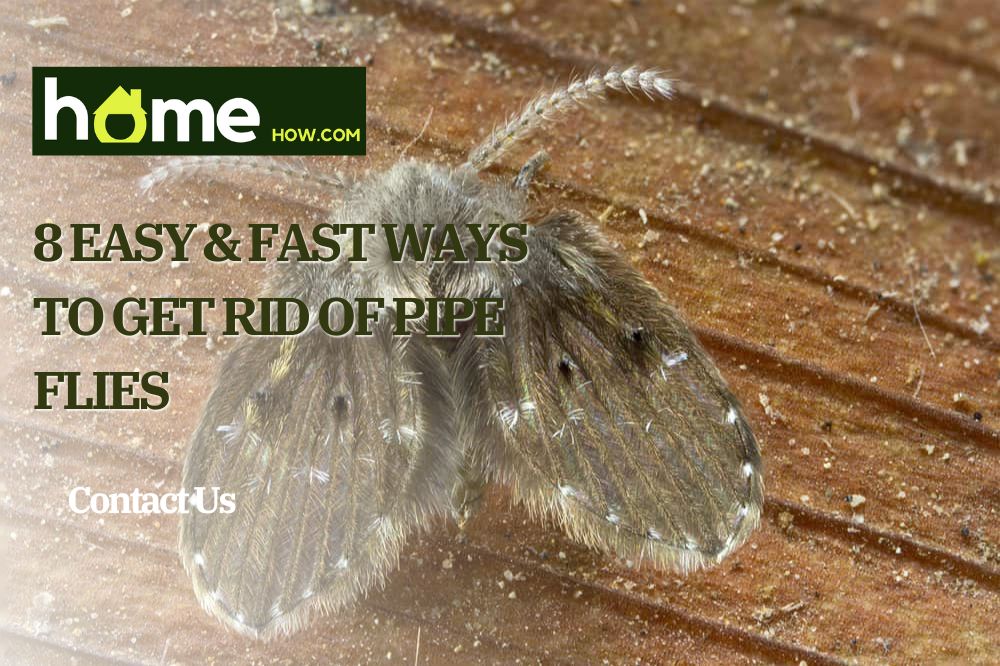Pests can be annoying creatures but probably none more so than the pipe flies. Pipe flies are prevalent in sinks that aren’t often used. However, they could also be found in frequently used drains. Wherever you find them. You’ll want to get rid of them as soon as possible.
Thankfully, getting rid of pipe flies may be easier than you imagined. Here we’ll show you how you can do it yourself. As well as showing you how to get rid of pipe flies, we’ll also see what causes them so you can stop them from coming back. Let’s get started!
What Are Pipe Flies?
Pipe flies are small, black bugs that typically live in drains and pipes. While they are not harmful to humans, they can be a nuisance because they often reproduce in large numbers. Pipe flies usually lay their eggs in gunky, damp places like drains or sewage pipes.
The eggs hatch into larvae, which then feed on the rotting organic matter in these environments. After a few weeks, the larvae mature into adults and emerge from their breeding grounds to start the cycle anew.
Although pipe flies are not dangerous, they can carry harmful bacteria on their bodies. Therefore, it is important to keep drains and pipes clean to prevent infestations.
They appear suddenly and mysteriously, often becoming a nuisance for people in their homes or commercial buildings. There is nowhere they wouldn’t go as long as there is a drain or pipe linking to sewage. If you are reading this, they are probably causing a nuisance for you as well!
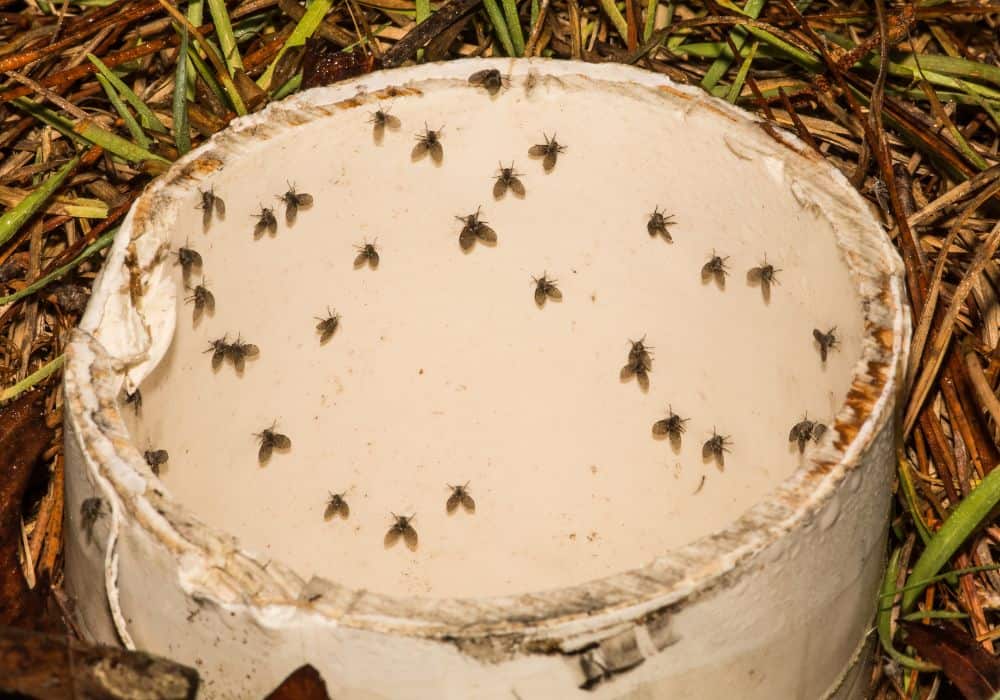
What Causes Drain Flies?
Drain flies or pipe flies have a two-week life span and a 48 hours reproduction window. What that means is that a bit of annoyance in your home, if left unattended to, can quickly become an infestation. So what causes drain flies to come around?
Pipe flies are drawn to and strive in stagnant or standing water. This type of water can be found in:
- Slow or clogged drains because there will be a substantial deposit of stagnant water for more extended periods
- Rarely used toilets because the water inside turns stagnant after a while
- Gathered water from leaking pipes can quickly turn stagnant, causing the flies to gather
- Open pipe drains leading to the sewage
You should check your home to see if you have any of these stagnant water issues. It may be that you need to unclog drains, flush toilets, or fix pipes otherwise the flies are likely to keep coming back.
Signs of Drain Fly or Pipe Fly Infestation
If you have begun to spot these flies in your home, it is easy to assume you may have an infestation on your hands. However, that may not be the case. It may be an infestation outside, but the flies find their way into your home. It can get confusing, but these signs will guide you.
Duct tape test – Place duct on your drain. If you have an infestation, the flies generally want to escape through the drains and get stuck on the tape.
Check for larvae – Check your sinks and toilets for larvae. This is a good sign that you have an infestation on your hands.
Check for leakages – Check for leakages around the home as well. The flies may be attracted to the body of water left behind by the leaking pipes.
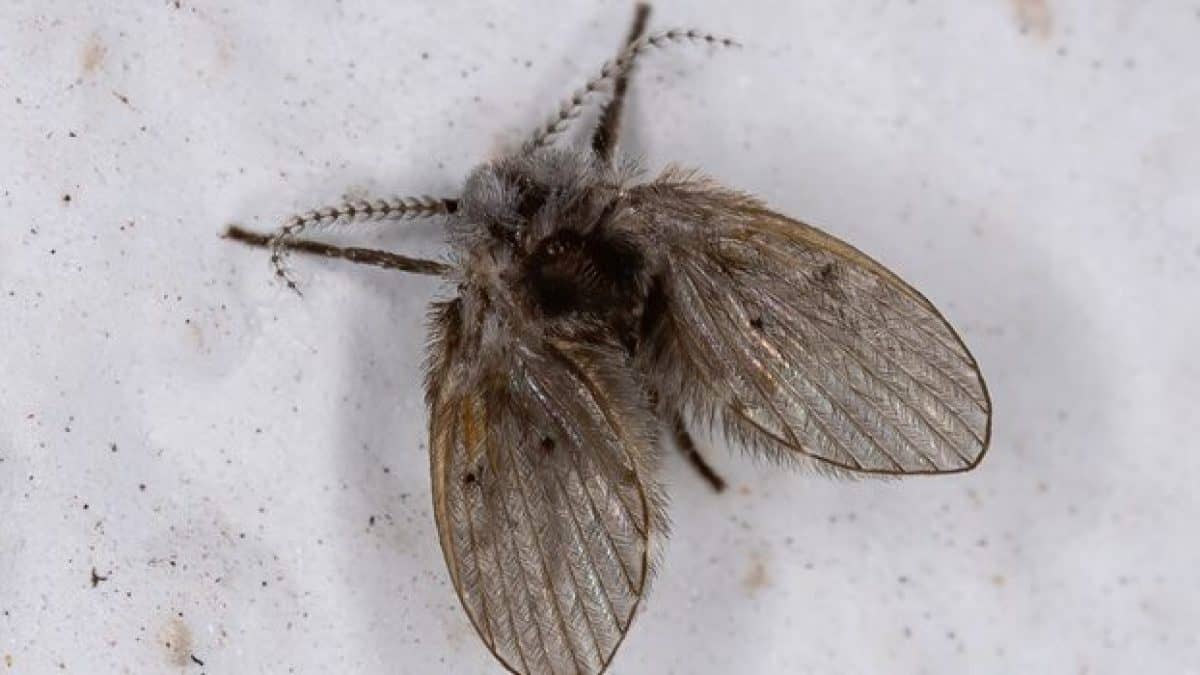
How to Get Rid of Pipe Flies
First, you should know that there are two ways to eliminate pipe flies infestation. There is a natural way and the use of chemicals. Typically the natural method works, but if the infestation is very bad, you may need chemicals to get rid of them.
Here we’ll take a look at eight different methods that you can choose from and you can decide which one will work best for you.
1. Plastic wrap and apple cider vinegar
Using a bowl, jar, or mug, create a fly trap by covering them with plastic wrap. Put a little bit of apple cider vinegar in the container. Use a knife to open up small holes, just enough to let the flies into the container but not to let them leave.
If you have a severe problem, then you may want to place several of these traps around your home. If you don’t have any apple cider vinegar, then overripe fruit is a good alternative.
2. Duct tape on a drain
Using duct tape, seal your drain and leave it overnight. You can also leave it there for several nights or change it regularly. The duct tape will trap the flies trying to get to the surface. Over time you should be able to get rid of them. The process is slow, though.
3. Pour boiling water
This is probably the easiest method of getting rid of the pipe fly infestation. Just pour boiled water into the drain two or three times a day, every day for a week. It would get rid of any stagnated water attracting the flies. It will also kill them.
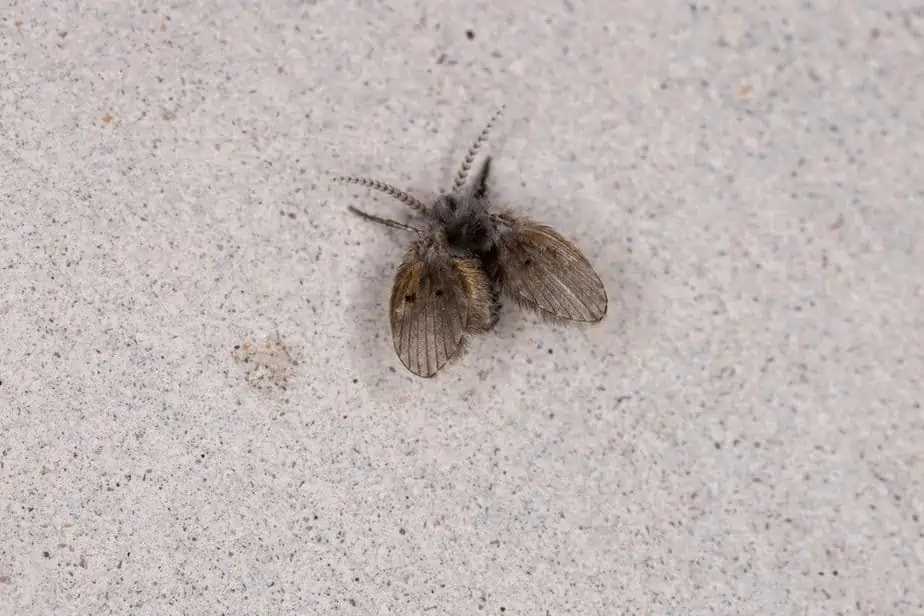
4. Vinegar, salt, and baking soda
These natural ingredients do an excellent job at many household cleaning tasks, including getting rid of pipe flies. The baking soda and vinegar help to expand the solution and clean your drain, while the salt will help to kill the flies. Once the solution has worked overnight, you can then flush it through with hot water.
5. Soap, sugar, and vinegar
Create this mixture by adding all these ingredients together along with some water. Leave the bowl close to the drain for a few days. The smell of the sugar and vinegar will attract drain flies and then the soap will break the surface tension of the water so they become trapped and drown.
6. Use drain cleaners
After using warm water and giving it an extra push with a pipe brush, use drain cleaners like bio-clean to eliminate any leftover fly infestation. Always read the user manual or instructions and use drain cleaners such as bio-clean appropriately.
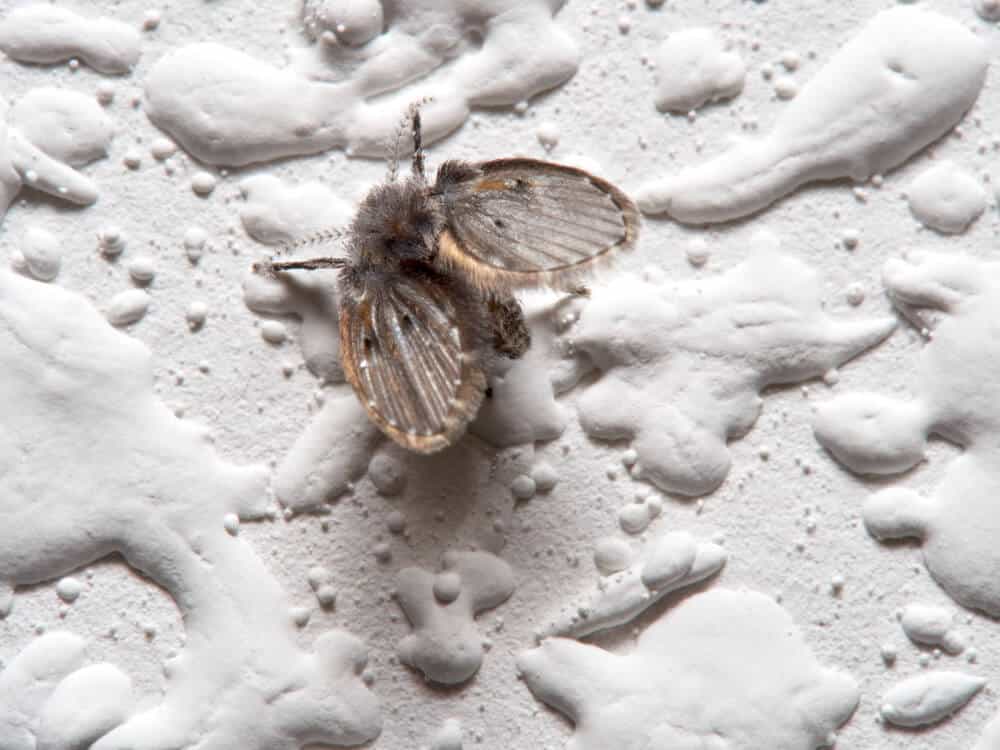
7. Chemical sprays (insecticides or repellents)
You can use many common insecticides. Insect repellents can also be used to kill and eliminate drain flies, especially if the drain flies are listed as one of the insects the spray kills. Always check if they can be used in areas like the kitchen and your drains.
8. Use bleach and vinegar
Pour vinegar into the drain, allow it to sit for a little while, then use bleach. Always make sure you run water through the drain to avoid damaging it. This will kill any flies in the drain and help to clear any clogs.
It’s best to use a combination of these methods. One of getting rid of the existing flies that you have and another to clear the stagnant water.
For example, if a sink drain is an issue then you can place the plastic wrap and apple cider vinegar solution around the drain and then also use a chemical drain cleaner to kill the flies in the drain and clear any blockage.
FAQs
1. Are drain flies harmful?
Pipe flies are small and they do not bite, nor do they sting. Therefore, they do not spread diseases easily. However, when you kill them, they may cause allergic reactions. So get rid of dead pipe flies as soon as possible. They can also carry bacteria so it’s best to use gloves and wash your hands when dealing with them.
2. Do drain flies bite?
The answer is yes and no. While adult drain flies do not bite humans, the larvae may feed on skin cells, causing irritation. In severe cases, this can lead to an allergic reaction or even secondary infections. In most cases, however, the bites are not harmful and will heal on their own.
3. What do drain flies look like?
Pipe flies are commonly called moth flies because they have similarities with the moth’s appearance. The tiny pipe flies come in different colors ranging from light tan to gray or black. In addition, the body of the drain flies is covered in hair, making them appear furry.
4. Where do drain flies come from?
Drain flies are attracted to stagnated or standing water. Drain flies or pipe flies have a two weeks life span and a 48 hours reproduction window. What that means is that a little annoyance in your home, if left unattended to, can quickly become an infestation.
Final Thoughts
Drain flies are annoying creatures, and an infestation of them can feel overwhelming. Although annoying, you can prevent them by cleaning up drainages and replacing bad drainage systems and leaking pipes.
The methods we’ve looked at here are effective at getting rid of your problem. While that’s true, always make sure you tackle the underlying problem of stagnant water so that they never come back. If you do, you won’t need to worry about pipe flies ever again.
